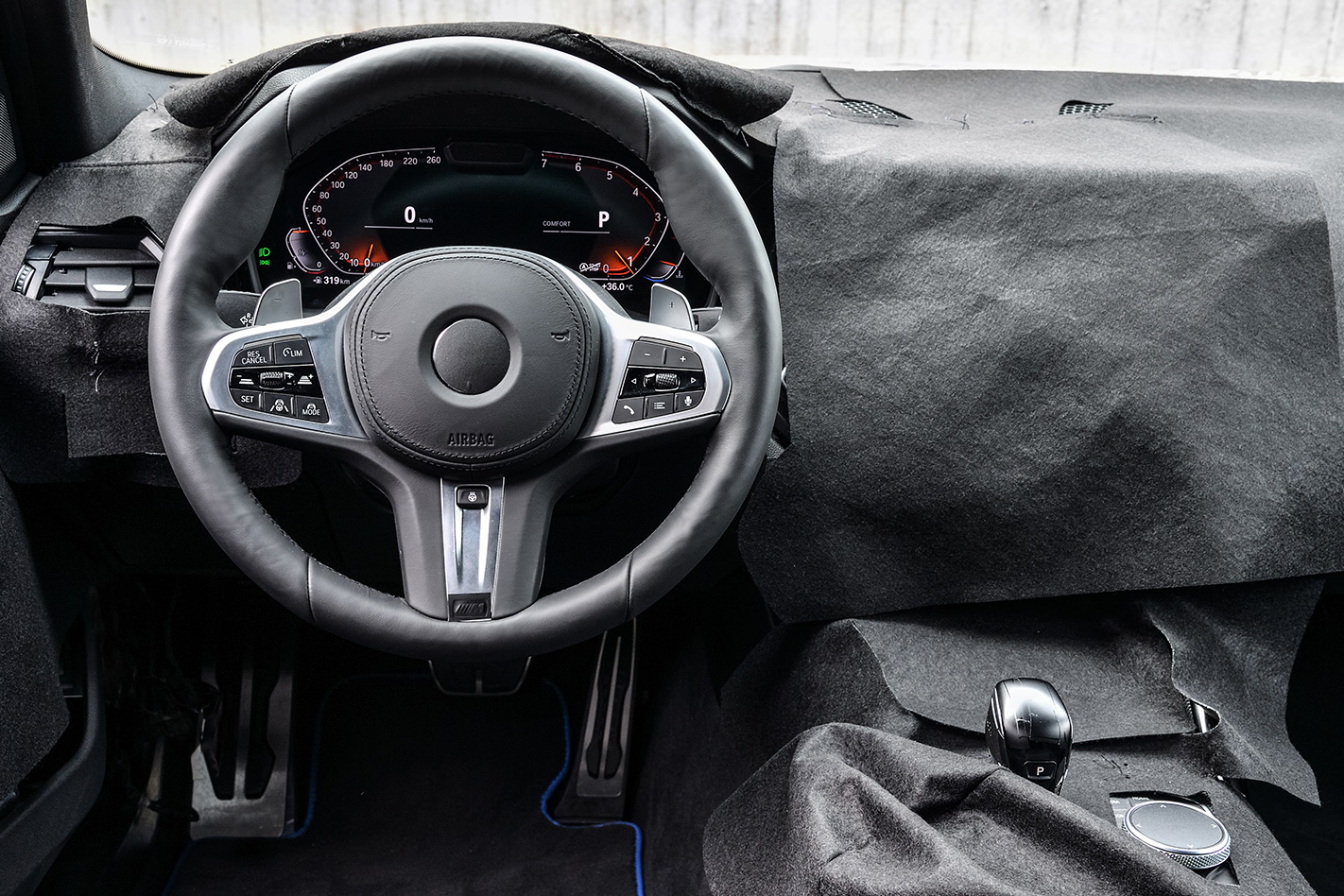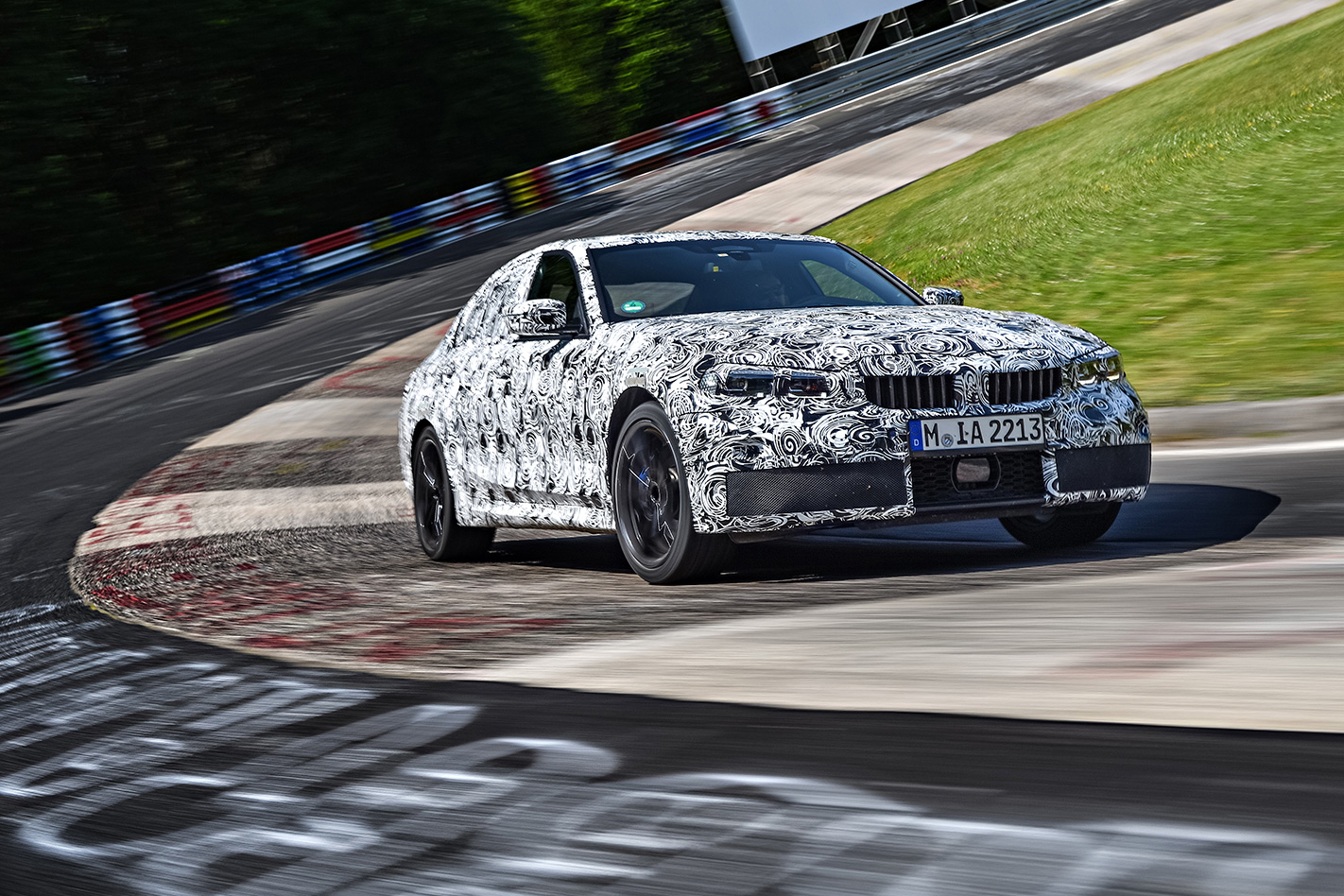WITH dwindling global sales and its reputation as the dynamic leader in the class among its junior premium executive sedan rivals no longer unimpeachable, BMW’s 3 Series replacement, codenamed G20, can’t come quickly enough. We’ll see it officially at the Paris Motor Show but we’ve spent some time in a 3 Series prototype in advance of its October unveiling.

Utilising BMW’s CLAR (Cluster Architecture) rear-wheel-drive platform, the next generation 3 Series will grow in dimensions, offer a range of revised engines and improved info and entertainment systems inside a larger, more upmarket interior. There’ll be a slight increase in the wheelbase for that more spacious cabin, but it’s the 30mm boost in track width that the engineers are most excited about.
Clearly stung by criticism that the existing 3 Series has been surpassed, or at least equalled on the road, that 30mm track width is instrumental – as well as a 10mm drop in the centre of gravity – in reasserting the 3 Series at the top of the class. In addition the 3 Series features new dampers with hydraulic bump stops for improvements not just in agility and precision, but also ride comfort. The new bump stops will be standard on all BMW 3 Series variants, from the lowliest entry-level 318i to the 340i M Performance models, these additionally gaining 10mm lower M Sport suspension with the option of an electronically controlled limited-slip differential.
With the suspension working off underpinnings that are some 50 percent stiffer than its predecessor, our early drive of the 3 Series, on road and track, underlines BMW’s assertion that it’ll take class honours dynamically. The 330i we sampled did benefit from riding on the optional M Sport suspension, as well as featuring the optional electronic limited slip differential, variable sport steering and BMW M Sport brakes; the engineers admitting that so equipped the 3 Series is at its very best. It’s unlikely to represent the biggest seller though.

What is undeniable is the 3 Series feels appreciably bigger inside, while even these late pre-production cars had an interior that’s a big step on in terms of quality feel, as well as visually. That, say BMW insiders, was a key development goal, as the current 3’s interior lacks the quality look and feel of its key C-Class and Audi A4 competition. The instrumentation in this upper-level 330i model is all digital, while lesser models are likely to feature a mix of analogue and digital displays, and an iDrive that’s a development of BMW’s latest seventh-gen system.
With 50/50 weight distribution and a reduction in overall weight by around 55kg over the outgoing model, agility has been improved significantly. That’s been achieved without impacting ride comfort, those new dampers allowing a fine balance of control and a smooth ride – even on the scabby roads around the Nurburgring.

On track, at higher speeds, the 3 Series exhibits that perfect 50/50 weight distribution, the wider track aiding stability, the turn-in sharp, the steering being light, quick and precise with fine weighting – and what passes for feel these days. The chassis engineers admit there’s about 10 percent of the finishing work to be done, the tuning of the electric power steering being a key area.
The engine line-up will largely follow the current range, the 330i we sampled gaining around 5kW, for an output of 190kW, torque increasing by as much as 50Nm to a 400Nm maximum. Those improvements come with a five percent gain in economy from the outgoing car’s 5.8L/100km. Getting the new 3 Series ready for the latest WLTP standards mandated by the EU will see the new 3 fitted with a particulate filter in the exhaust for both petrol and diesel models.

At the entry-point to the range the 3 Series will continue to be powered by the 1.5-litre three-cylinder turbo engine, also with a 5kW bump to 105kW, and will still be badged 318i. Above that BMW’s turbocharged 2.0-litre four-cylinder will account for the bulk of global sales and will be offered in various states of tune from an unchanged 135kW in the 320i, to 190kW in the 330i.
Above that the 340i will be the only six-cylinder petrol 3 Series, with power output expected to be around 272kW. Diesel choices comprise the 2.0-litre four-cylinder 316d, 318d and 320d, with a six-cylinder 3.0-litre in both 330d and 335d guises.

In line with the zeitgeist, a pair of plug-in hybrid models will be offered. They will use the 1.5-litre three-cylinder engine and the 2.0-litre petrol turbo engines boosted by electric motors of differing outputs. Likely to be badged 320e and 330e, the electric-only range will be in the region of 50 to 80 kilometres.
Just as for the existing 3 Series range there will be the option of xDrive all-wheel drive (TBC for Oz), as well as M Performance versions to take on Audi’s S and Mercedes-AMG’s 43-badged competition. The M Performance models will be introduced shortly after the 3’s introduction in Paris and early 2019 on-sale date, giving BMW some wiggle room before it replaces the M3.

M3 & M4
Rumours of the M3’s technical specifications remain exactly that, but it’s likely that the 2020 model year M car will retain turbocharged in-line six-cylinder power, aided by the water injection intake system borrowed from the limited-run M3 GTS special.
Electric turbos and a 48-volt mild-hybrid system are expected, bringing torque fill and improved throttle response, as well as benefits in economy. Switchable all-wheel drive is likely given a figure of 372kW is being bandied about it. BMW M CEO Frank Van Meel is on record saying above a certain level all-wheel drive is a necessity.

Local heroes
If there’s one thing we’ve learned with past 3 Series generations, it’s that something tends to be lost in the translation when export to Australia is considered. We have had to make do with a seriously cut-down subset of what’s on offer in Europe and the US, missing out on xDrive variants and performance diesels. That may well be changing. BMW plans to streamline its product planning to harmonise across world markets. The 3 Series certainly needs all the help it can get in Australia. In 2017 the Mercedes-Benz C-Class more than trebled the local sales of the 3 Series.





